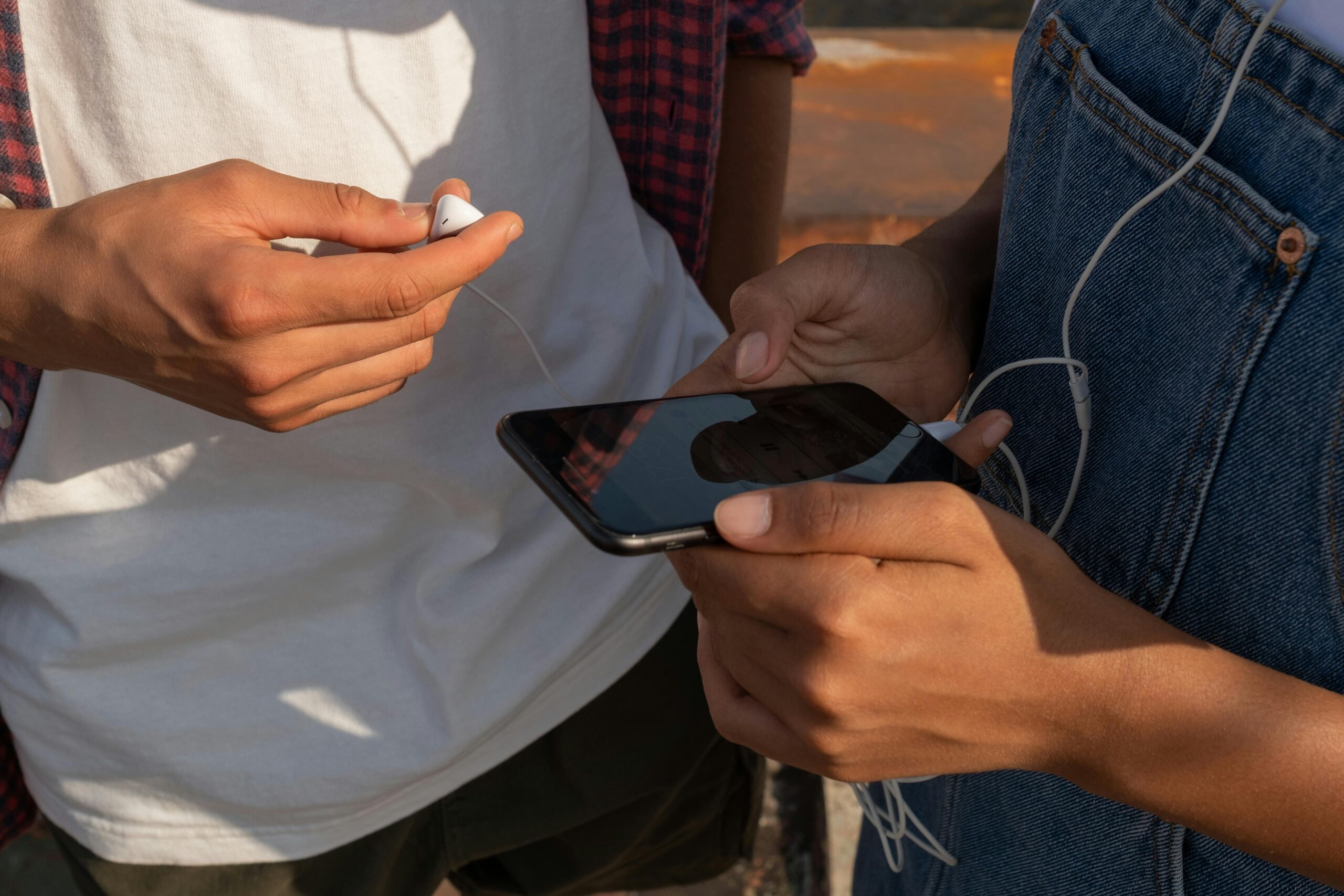Mp3 To YouTube Converter – sounds simple, right? But, honestly, why is no one talking about how tricky it can be to transform your audio files into a video format that YouTube actually likes? Maybe it’s just me, but I always assumed you could just upload your mp3 and call it a day. Spoiler alert: you can’t. That’s where the whole idea of an mp3 to youtube converter becomes a lifesaver, or at least a handy tool you didn’t know you desperately needed until now. Not gonna lie, this surprised me too — who knew turning a simple audio file into a YouTube-ready video could involve so many steps?
So, what if we’ve been wrong all along thinking all converters are created equal? The truth is, finding an easy, reliable way to convert mp3 to YouTube without losing quality or wrestling with complicated software is like hunting for a unicorn. You’d think this would be obvious, right? But the market is flooded with options, and not all of them do what they promise. This article is all about breaking down how to easily transform your audio files into videos that actually work on YouTube, without the headache and frustration. Whether you’re a musician wanting to share your latest track, a podcaster looking for more reach, or just someone curious about the whole process, stick around — there’s more to this than meets the eye.
And if you’re wondering, “Why bother converting mp3 to YouTube at all?” — well, you’re about to find out why it’s one of the smartest moves for content creators today. Plus, we’ll cover some sneaky tips on how to make the process smoother, faster, and honestly, a bit more fun. Because let’s face it, if you’re going to do this, you might as well do it right.
What Is an MP3 to YouTube Converter and Why You Need One in 2024
Alright, so you’ve probably stumbled across this phrase at some point: “MP3 to YouTube converter.” Sounds fancy, right? But what the heck is it actually? And why on earth would you need one in 2024, of all years? Honestly, the whole thing kinda feels like one of those tech trends that just won’t die, yet somehow keeps evolving faster than I can keep up. So, let’s dive in — or at least try to — and figure out what all this fuss is about.
What Is an MP3 to YouTube Converter, Anyway?
Simply put (well, as simply as I can manage at 2am), an MP3 to YouTube converter is a tool or software that lets you take an MP3 file — you know, that audio format everyone uses for music, podcasts, and random voice notes — and turn it into a YouTube video. Sounds weird, yeah? Why would you wanna do that?
Well, YouTube is primarily a video platform, obviously. But if you have audio content you wanna share and don’t want to bother with filming or editing a full video, these converters slap your audio onto a static image or slideshow and upload it as a video. Voila, your MP3 is now a YouTube video. Not rocket science.
Why You Might Actually Need One in 2024
Okay, before you roll your eyes and say “seriously, who even came up with this?” — hear me out. There are legit reasons why this converter thing is still a thing.
- Expanding reach: YouTube’s massive audience means your content could reach people who wouldn’t find your audio-only stuff on Spotify or Apple Podcasts.
- Monetisation: YouTube offers monetisation options that some podcast or audio platforms don’t, so converting your MP3s might help you earn a few quid.
- Visual engagement: Even a simple static image can boost engagement more than a plain audio file, because humans are weirdly visual creatures.
- Easy sharing: Sharing a YouTube link is often easier than sending MP3s, especially when dealing with platforms that don’t support audio files well.
Honestly, it’s like turning your audio into this mini-movie — minus the explosions and plot twists.
MP3 to YouTube Converter: How To Easily Transform Your Audio Files
Alright, now that we’re on the same page about what this thing is, how do you actually do it? There are loads of converters out there — some free, some paid, some sketchy — so here’s a quick rundown of the basics:
- Choose your converter: Online tools like “Kapwing,” “VEED,” or “Headliner” are pretty popular. Some even let you add subtitles or waveforms to jazz up the video.
- Upload your MP3: This part is usually straightforward. Just upload your audio file.
- Add visuals: Most converters ask you to upload an image or pick a background. Some auto-generate waveforms or visual effects.
- Export your video: Hit convert, wait a bit (sometimes feels like forever), and download the MP4 file.
- Upload to YouTube: Finally, upload your new video to your channel, add titles, descriptions, maybe some hashtags, and boom.
See, not too painful. Although, why does every video upload feel like it takes a millennium? Anyway…
A Quick Table for Those Who Like Things Neat
| Feature | Pros | Cons |
|---|---|---|
| Online Converters | No install, quick, free options | May have watermarks, limited features |
| Desktop Software | More control, better quality | Takes up space, can be pricey |
| Mobile Apps | On-the-go convenience | Limited editing tools |
| Manual Editing (e.g., iMovie) | Full creative control | Time-consuming, steep learning curve |
Honestly, I usually just pick an online converter because who has time for fancy editing when you’re half-asleep?
Why It’s Still Relevant Despite Everything Else
Look, with TikTok and Instagram Reels hogging the spotlight, you might be wondering if YouTube and these converters are even worth the hassle. Maybe it’s just me, but I think YouTube’s still the king for long-form content. Plus, not everyone’s into short videos or scrolling endlessly.
Also, YouTube’s algorithm tends to be forgiving to creators who upload consistent content, even if it’s just simple audio with a photo slapped on it. So, if you’re like me and don’t fancy filming or fancy editing, this converter is your lazy best mate.
Sorry, Had to Grab a Coffee — Anyway…
Back to business. Just a heads up — not all MP3 to YouTube converters are created equal. Some will compress your audio so much
Top 10 Best MP3 to YouTube Converters for Seamless Audio Uploads
Alright, so here we are — diving into the weirdly specific world of mp3 to YouTube converters. Honestly, who even thought that converting an audio file into a video for YouTube uploads would become a thing? Like, we’ve got fancy streaming services and all, but nope, people still want to slap their MP3s onto YouTube. Maybe it’s just me, but that seems a bit roundabout, no? Anyway, whatever floats your boat.
Why Bother With MP3 to YouTube Converters Anyway?
Okay, before we get knee-deep into the list, let’s just clear up why this even matters. YouTube isn’t exactly an audio streaming platform—it’s video-first, right? So if you just wanna share your latest podcast episode, a track you made, or some random soundbite, you’ll need to make a video out of your audio file. That’s where these mp3 to YouTube converters come in. They basically convert your audio (usually an MP3) into a video format (like MP4) that YouTube won’t throw a tantrum over.
Also, fun fact — YouTube prefers videos that are longer, have visuals, and aren’t just a black screen with sound. So some converters give you the option to add images, waveforms, or even subtitles. Fancy, eh?
How To Easily Transform Your Audio Files: The Basics
Right, so first things first, here’s a quick and dirty step-by-step on how these converters usually work:
- Upload your MP3 file to the converter tool.
- Choose a visual element (could be a static image, slideshow, or waveform).
- Tweak video settings if you want (resolution, format, length).
- Convert and download the video file.
- Upload that video to YouTube, add your description, tags, and boom — done.
Simple, but not always smooth. Sometimes the upload fails, or your video ends up looking like it was made in 1999 on Windows Movie Maker. Seriously, who even came up with this?
Top 10 Best MP3 to YouTube Converters for Seamless Audio Uploads
Alright, now onto the juicy bit. I’ve rounded up the best tools out there (at least, the ones that didn’t make me want to throw my laptop out the window). They’re ranked based on ease of use, features, and, of course, how well the output looks.
| Rank | Converter Name | Key Features | Free/Paid | Best For |
|---|---|---|---|---|
| 1 | Kapwing | Online, easy editing, add images/waveforms | Free & Paid | Quick and versatile |
| 2 | VEED.io | Subtitles, filters, simple interface | Free & Paid | Social media creators |
| 3 | Clideo | Straightforward, watermark in free version | Free & Paid | Basic conversions |
| 4 | Animaker | Custom animations, drag-and-drop | Paid | More creative video needs |
| 5 | TunesToTube | Direct upload to YouTube from MP3 | Free | Musicians who hate extra steps |
| 6 | InVideo | Templates, stock footage | Free & Paid | Professionals and marketers |
| 7 | Adobe Spark | High-quality visuals, branding options | Paid | Brand-conscious users |
| 8 | Wave.video | Waveform animations, cloud-based | Free & Paid | Podcasters and vloggers |
| 9 | Clipchamp | Microsoft-owned, simple editor | Free & Paid | Beginners |
| 10 | FlexClip | Easy to use, quick exports | Free & Paid | Casual users |
Look, I’m not gonna pretend I tested every single one for hours — who has that kind of time? But from what I’ve seen and heard, these get the job done without making you want to scream.
Sorry, had to grab a coffee — anyway…
So, if you’re thinking “why not just upload my MP3 directly to YouTube?”, well, you can’t really do that because YouTube doesn’t support audio-only uploads. Weird, right? They want your stuff in video format, presumably to keep the platform visually engaging or something.
If you’re a musician or podcaster, using these converters can actually save you loads of hassle. Imagine having to make a video from scratch every time you wanna share a new track — nah, mate. These tools automate the boring bits, letting you focus on the creative stuff. Or binge-watching your series, no judgment.
Tips for Choosing the Right MP3 to YouTube Converter
Here
How to Convert MP3 to YouTube Videos Without Losing Audio Quality
Alright, so you’ve got a banging MP3 file — maybe your latest podcast episode, or some indie track you recorded in your mum’s basement — and you wanna slap it onto YouTube. But hold on, how do you convert MP3 to YouTube videos without turning your pristine audio into some muffled mess that sounds like it’s coming through a tin can? Honestly, not as straightforward as it sounds. Not really sure why this matters, but apparently, people care about audio quality on YouTube. Like, who even watches YouTube videos just for the sound? Anyway, let’s dive into this mp3 to YouTube converter saga.
Why Even Bother Converting MP3 to YouTube?
You might be thinking, “Why can’t I just upload the MP3 directly to YouTube?” Well, turns out YouTube only accepts video formats. So, your audio file needs some visual accompaniment — even if it’s just a static image or a slideshow of your cat (or that dodgy album cover you made in Paint).
Plus, YouTube’s compression algorithms can be ruthless. They’ll chew up your audio and spit out a lower-quality version if you don’t handle it right. That’s right, your sweet tune might end up sounding like it was recorded through a mobile phone mic from 2007. Shocking, I know.
Mp3 To YouTube Converter: What on Earth Are We Talking About?
Basically, a mp3 to YouTube converter is any tool or software that takes your MP3 audio and turns it into a video file (usually MP4 or MOV). This video file then has your audio track embedded with some sort of image or video footage.
Some converters are online websites — quick and dirty. Others are fancy software with all sorts of bells and whistles (like Adobe Premiere Pro or iMovie), which might be overkill if you only wanna upload that one track.
Here’s a quick rundown of popular options:
- Online converters: Clunky but fast. Examples: Kapwing, Veed.io, or Online-convert.com.
- Desktop software: More control, better quality. Examples: Audacity (with a video editor), Adobe Premiere, or even free options like Shotcut.
- Mobile apps: Handy if you’re on the go, but quality can be hit or miss.
How to Convert MP3 to YouTube Videos Without Losing Audio Quality (Or Trying Not To)
Okay, so you have your MP3 and want to keep it sounding top-notch. Here’s a step-by-step (or at least, mostly coherent) approach:
- Pick your visuals: You need at least one image to “show” on screen while the audio plays. Could be your logo, album art, or a simple background.
- Choose the right software: If you’re just uploading a single track, online converters might do the trick, but be wary of quality loss. For better control, try desktop software.
- Set video resolution: YouTube loves HD, so aim for at least 720p (1280×720). Weirdly, if your video is too low-res, YouTube might compress it more aggressively.
- Export settings: Use a high-quality codec like H.264, and export your video in MP4 format.
- Check audio bitrate: Keep your audio bitrate as close to the original as possible — 320 kbps MP3 or lossless if you can. Don’t convert your MP3 down to 128 kbps or you’ll regret it.
- Upload and pray: Upload to YouTube, pick a good title, and cross your fingers that YouTube’s compression doesn’t butcher it.
Honestly, this sounds fancier than it is. But here’s a little table to compare what happens if you’re lazy vs careful:
| Approach | Ease of Use | Audio Quality | Visual Appeal | Risk of Compression Damage |
|---|---|---|---|---|
| Online mp3 to video | Very easy | Medium | Basic image | Medium |
| Desktop video editor | Medium | High | Fully custom | Low |
| Mobile apps | Easy | Low-Medium | Limited | High |
Sorry, had to grab a coffee — anyway…
One thing I forgot to mention (because distractions are my speciality) — YouTube re-encodes every single upload. So even if you upload a pristine WAV file turned video, YouTube will compress it. There’s no escaping that. The trick is to start with the best quality possible so the final output after YouTube’s magic isn’t total rubbish.
Bonus Tips for the Perfectionists (or just the confused)
- Don’t use weird file formats. Stick to MP4 with H.264
Step-by-Step Guide: Easily Transform MP3 Files into YouTube-Ready Videos
Alright, so you’ve got this banging MP3 file, right? Maybe it’s your latest podcast episode, a sick remix you made at 3 am, or just that one track you swear no one else has heard but you (because who even listens to stuff anymore?). And now, you wanna pop it on YouTube — but wait, YouTube doesn’t do audio-only uploads. Classic. So how the heck do you turn that MP3 into a video that won’t make people click away faster than you can say “buffering”?
Well, welcome to the weirdly specific but oddly satisfying world of the mp3 to YouTube converter. Sounds fancy, but it’s basically just slapping your audio onto some visuals so YouTube doesn’t throw a tantrum. Not really sure why this matters, but if you’re here, you probably wanna know how to do it without losing your mind or downloading some dodgy software. So, let’s dive in (or at least pretend we’re diving, because honestly, who reads intros anymore?).
Why Bother With MP3 To YouTube Conversion Anyway?
Okay, so before we get our hands dirty, why does this whole thing even exist? You’d think YouTube would be chill and just accept MP3s. Nope. YouTube is all about video content, and if you upload audio-only, it’ll either reject it or give you a black screen — which is about as appealing as watching paint dry.
Here’s a quick rundown of why you need to convert:
- YouTube demands video files (.mp4, .mov, etc.), not just audio.
- Videos with visuals get more engagement (duh).
- Adding images or animations keeps viewers less bored.
- It’s a sneaky way to add branding or info alongside your audio.
- Algorithms love videos, so it might help your content get found.
Seriously, who even came up with this? You’d think in 2024, audio-only uploads would be a thing, but nope. It’s like trying to fit a square peg in a round hole.
Step-by-Step Guide: Easily Transform MP3 Files into YouTube-Ready Videos
Here’s where it gets fun (or tedious, depending on how much coffee you’ve had). This isn’t rocket science, but there’s a few ways to skin this cat, so I’ll give you the basics.
Pick Your Tool
There are tons of mp3 to YouTube converter tools out there. Some online, some apps, some software. A quick search will throw up names like:- Kapwing
- Headliner
- Veed.io
- iMovie (if you’re on Mac, but meh)
- Windows Video Editor (yes, that thing still exists)
Honestly, online tools are easiest because you don’t have to install anything and they usually have templates or drag-and-drop features.
Upload Your MP3
This is straightforward. Click the big shiny upload button and select your audio file. Wait a bit while it uploads. Depending on your internet, this might take forever or two seconds.Add Visuals
Now, here’s the bit where you decide if you wanna be fancy or lazy:- Slap on a static image (album cover, logo, or that weird photo of your cat).
- Go wild with waveforms or animations that bounce to the beat.
- Or insert a slideshow of pics related to your audio.
Pro tip: Keep it simple if you’re not a graphic designer. No one wants to watch a pixelated mess.
Edit and Tweak
Trim your audio if needed, add captions if you’re into that, and set the video length to match your audio. Most tools let you preview before finalising.Export and Download
Hit the export button and wait for your new video file to render. This can take a while, especially if you added animations or your file is massive.Upload to YouTube
Finally, upload the video like any other. Add a catchy title, description, tags, and boom — you’re a YouTube content creator now. Well, sort of.
A Quick Comparison of Popular MP3 to YouTube Converters
| Tool | Pros | Cons | Cost |
|---|---|---|---|
| Kapwing | Easy to use, free options | Free version adds watermark | Free/Paid |
| Headliner | Great for podcasts, waveform visuals | Limited free exports | Free/Paid |
| Veed.io | Lots of editing features | Slow rendering on free plan | Free/Paid |
| iMovie | Native Mac app, no watermarks | Mac only, |
The Ultimate Guide to Free MP3 to YouTube Converters – Pros and Cons
So, you want to know about free MP3 to YouTube converters, huh? Well, buckle up, because honestly, this topic is way more complicated than it sounds — or maybe I’m just overthinking it at 2am. But hey, in a world where everyone’s trying to upload their mixtape or podcast snippets to YouTube without shelling out a fortune, knowing your way around these converters is kinda essential. Or not. Maybe it’s just me, but converting mp3s to YouTube videos feels like one of those small, oddly specific things that somehow matter a lot.
What Even Is an MP3 to YouTube Converter?
Alright, so here’s the gist: an MP3 to YouTube converter is basically a tool or software that lets you take your audio files—usually in MP3 format—and turn them into a video format that YouTube will accept. Why? Because YouTube is a video platform, not an audio one, duh. So you can’t just upload an mp3 and hope for the best. You need to slap on an image or some kind of visual component and turn it into a video file (like MP4).
Seriously, who even came up with this? Like, why can’t YouTube just handle audio uploads? But anyway, the converters do this automatically. Some of them let you pick a background image, others just do a black screen or a waveform animation. It’s all a bit bonkers if you ask me.
The Ultimate Guide to Free MP3 to YouTube Converters – Pros and Cons
Let’s get into the meat and potatoes of this mess. There are loads of free converters out there, but they’re not all created equal. Some are brilliant, some are sketchy as hell, and some just straight-up don’t work. Here’s a quick rundown of the pros and cons you might wanna keep in mind:
Pros:
- Free to use — duh, that’s the whole point. No wallet crying here.
- Quick turnaround — some convert in seconds, which is handy when you’re in a rush.
- No special skills needed — usually drag and drop, and you’re done.
- Add images or simple visuals — makes your audio a bit less boring on YouTube.
- Accessible online — no need to download heavy software, yay.
Cons:
- Watermarks or branding — annoyingly, some slap their logo on your video.
- Limited customisation — like, forget advanced editing or slick animations.
- File size limits — free versions sometimes restrict how big your mp3 can be.
- Conversion quality varies — some output looks grainy or lags.
- Privacy concerns — uploading your files online can be a bit dodgy security-wise, especially if it’s your unreleased next banger.
MP3 To YouTube Converter: How To Easily Transform Your Audio Files
So, if you’re wondering how to actually do it, here’s a simple step-by-step that should work with most free converters:
- Find a reputable free MP3 to YouTube converter online. (Tip: Google “mp3 to youtube converter free” and check the reviews. Don’t just click the first sketchy link.)
- Upload your MP3 file. Usually, there’s a big button that says “Choose file” or “Drag & Drop.”
- Choose a background image or visual. Some sites let you upload your own pic; others have presets.
- Hit the convert button and wait. Depending on your file size and internet speed, it can be quick or painfully slow.
- Download your new video file (usually MP4).
- Upload it to your YouTube channel like a pro.
Easy, right? Well, kinda. Sometimes the converters crash or just hang forever. It’s like they know you’re desperate and want to mess with you. 🙄
Free MP3 to YouTube Converter Comparison Table
| Converter Name | Pros | Cons | Best For |
|---|---|---|---|
| YTMP3.cc | Super fast, no registration | Ads are annoying, low customisation | Quick, no-nonsense conversions |
| MP3Care | Allows custom images | File size limit, slow sometimes | Beginners wanting visuals |
| Online-Convert.com | Supports many formats | Confusing UI, slow conversion | More advanced users |
| VEED.IO | Simple editor included | Free version watermark | Editing with audio conversion |
| Kapwing | Easy to use, cloud-based | Limited free usage | Social media content creators |
Why This Still Matters (Or Does It?)
Honestly, uploading audio-only content to YouTube feels like a weird workaround, but it’s a massive deal for podcasters, musicians, and anyone
Can You Upload MP3s Directly to YouTube? Here’s What You Should Know
Can You Upload MP3s Directly to YouTube? Here’s What You Should Know
Alright, so you’ve got this banging MP3 file — maybe your mate sent you a sick remix, or you’re just trying to share your latest podcast episode — and you’re wondering, “Can I just chuck this MP3 straight onto YouTube?” Spoiler alert: It ain’t that straightforward. Not really sure why this matters, but apparently, YouTube’s not exactly built for uploading audio files alone. It’s a video platform, after all, so you can’t just upload an MP3 and expect it to magically turn into a YouTube video. I mean, seriously, who even came up with this? It’s 2024, and we still gotta jump through hoops just to share audio on a video site.
Anyway, what was I saying again? Oh, right — let’s break down what’s going on with MP3 files and YouTube, and how you can actually get your tunes or talks out there without losing your mind.
Why YouTube Doesn’t Take MP3s Directly (And Why That’s Kinda Obvious)
First off, YouTube is designed for videos. Like, actual moving pictures, not just sounds. Uploading an MP3 file directly? Nope. No can do. You’ll get an error, or it’ll simply reject the file type. The platform expects:
- Video files (MP4, MOV, AVI, etc.)
- Audio with video, so at least some kind of visual content
It’s a bit like trying to bring your dog to a cat party — just doesn’t fit the vibe. So if you want to share your MP3 on YouTube, you gotta convert it into a video file somehow. That’s where all those “mp3 to YouTube converter” tools come in, which, by the way, is a whole other kettle of fish.
MP3 to YouTube Converter: How To Easily Transform Your Audio Files
Okay, so this is the main workaround. Since YouTube wants a video, you need to slap some kind of image or visual element onto your MP3. That way, you’re technically uploading a video, but it’s really just your audio playing over a static picture or slideshow. Clever, right?
Here’s how you can do it, roughly:
- Pick an image or create a simple visual — could be your album cover, a logo, or even just a black screen (boring but effective).
- Use a video editing tool — many free ones like iMovie (Mac), Windows Photos app, or online editors like Kapwing or Canva.
- Import your MP3 and your image into the editor.
- Align the image to show for the entire length of the MP3 — so the video duration matches the audio.
- Export/save it as an MP4 or other YouTube-friendly video format.
- Upload that video to YouTube.
Sounds simple, but it’s a bit fiddly if you’re not used to video editing. Plus, some converters online claim to do it all in one go — you upload your MP3 and image, and it spits out a video file for you. Handy, but watch out for dodgy sites or watermarks.
Quick Table: Comparing Popular MP3 to YouTube Converter Tools
| Tool Name | Free Version | Ease of Use | Watermarks? | Platform | Notes |
|---|---|---|---|---|---|
| Kapwing | Yes | Pretty easy | Limited | Web-based | Good for quick edits, needs sign-up |
| iMovie | Yes | Moderate | No | Mac | Solid but Mac-only |
| Windows Photos | Yes | Easy | No | Windows | Basic, but works |
| Online Audio Converter | Yes | Easy | No | Web-based | Simple, no frills |
| Veed.io | Yes | Easy | Yes | Web-based | Watermark unless paid |
Not that I’m endorsing any, but it’s enough to get you started without feeling overwhelmed.
Some Random Thoughts About Uploading MP3s to YouTube
Honestly, it’s a bit nuts that YouTube doesn’t just have a built-in “upload audio only” option. Maybe it’s just me, but I’d think loads of podcasters, voice artists, and musicians would appreciate that. Instead, you gotta faff about making a video file, which feels unnecessarily complicated.
Oh, and copyright — be careful here. Uploading audio to YouTube opens a can of worms with Content ID claims if it’s not your own stuff. So if you’re just sharing that one hit song you found online, expect trouble
Best Practices for Optimising Your MP3 to YouTube Conversions for SEO
So, you’ve got a stack of MP3s just lying around, and somehow you decided—brilliantly or recklessly, who knows?—to convert them into YouTube videos. Maybe it’s for reach, maybe it’s for SEO, or maybe you just can’t resist that sweet, sweet algorithm juice. Whatever your reason, if you’re googling stuff like “mp3 to youtube converter” or “Best Practices for Optimising Your MP3 to YouTube Conversions for SEO,” you’re in the right place. Or at least, I hope so, because this is gonna be a bit of a mess, but also useful? We’ll see.
Why Bother Converting MP3s to YouTube Anyway?
First off, why even bother turning an audio file into a video? YouTube’s massive, right? Like, it’s the second largest search engine after Google, so putting your audio there kinda makes sense. But here’s the kicker—YouTube is a visual platform, so just slapping an MP3 with a static image isn’t gonna cut it for SEO or engagement. Seriously, who even came up with the idea that uploading an audio file with a single picture would be enough? Anyway…
Back in the day, people used to just throw their songs or podcasts up there with a random image, and hoped for the best. But YouTube’s algorithm is smarter now (ugh), and it favours videos that keep people watching or interacting. So here’s the deal—the better you optimise your MP3 to YouTube conversion, the more chance you have of actually getting noticed.
Mp3 To YouTube Converter: How To Easily Transform Your Audio Files
This is where the fun begins—or the mild frustration. Converting an MP3 to a YouTube-friendly format isn’t rocket science, but it’s not as straightforward as dragging and dropping either. You’ll need some kind of software or online converter. Here’s the lowdown:
- Desktop Software: Programs like Adobe Premiere Pro, iMovie, or even free ones like Shotcut can merge your MP3 with images or video clips. You get more control, but it’s a faff if you just want something quick.
- Online Converters: Websites like Kapwing, VEED, or Clideo let you upload your MP3 and add images or waveforms. Easy peasy, but sometimes they slap watermarks unless you pay.
- Mobile Apps: If you’re on the go, apps like InShot or KineMaster can do the job, but screen real estate is a pain.
Honestly, if you just want to chuck a track up with a nice-looking waveform or a slideshow of photos, online converters are your mates. But don’t expect perfect SEO magic just by uploading a file.
Best Practices for Optimising Your MP3 to YouTube Conversions for SEO
Alright, now the boring but essential stuff. Optimising for SEO when converting MP3s to YouTube videos is a bit of an art and science mashup. Here’s what you should do, if you want to pretend like you know what you’re doing:
- Title It Right: Use keywords naturally in your video title. If you’re targeting “mp3 to youtube converter,” make sure that phrase is there. But don’t just stuff it like a Christmas turkey.
- Descriptions Matter: YouTube’s description box is like your secret weapon. Add a detailed description, include relevant keywords, timestamps if applicable, and maybe a link or two. Not really sure why this matters so much, but apparently it does.
- Tags and Categories: Use relevant tags (but don’t go nuts), and pick the right category to help YouTube understand your content.
- Thumbnail Game: Don’t just settle for that boring image you uploaded. Make a custom thumbnail that’s clear and eye-catching. Seriously, thumbnails are like the book covers of YouTube.
- Engagement: Encourage comments, likes, and shares. Maybe ask a question at the end or in the description. I mean, if people interact, YouTube thinks your stuff is important.
- Captions & Transcripts: Adding subtitles or transcripts can boost your SEO because YouTube can index the text, making your content more discoverable.
- Video Length & Quality: Make sure the video isn’t just a 2-second static image with audio. Maybe add some simple animations or a moving waveform. Keeps folks watching, which YouTube loves.
Quick Table: SEO Dos and Don’ts for MP3 to YouTube Conversions
| Dos | Don’ts |
|---|---|
| Use clear, keyword-rich titles | Stuff titles with random keywords |
| Write detailed descriptions | Leave descriptions blank |
| Add custom thumbnails | Use blurry or irrelevant images |
| Include captions/transcripts |
How to Add Visuals and Custom Backgrounds When Converting MP3 to YouTube
Alright, so you’ve got this MP3 file — maybe it’s your mate’s podcast, some sick tunes you made, or just that one song you keep replaying when you’re pretending to work — and you wanna slap that bad boy onto YouTube. But hold up, it’s not just about tossing an audio file into the void; YouTube’s a visual platform, innit? So how do you add visuals and custom backgrounds when converting MP3 to YouTube? And, more importantly, what’s the easiest way to do it without losing your sanity? Buckle up, because this mp3 to YouTube converter business might be a bit more interesting (and annoying) than you think.
Why Bother Adding Visuals to Your MP3?
Honestly, you might wonder why it even matters. YouTube’s mostly for videos, yeah? But just uploading a black screen or some random blank image with your audio is a bit meh. Plus, YouTube’s algorithm apparently likes it better if there’s some kind of visual stimulus — not just for us humans but for bots or whatever. And let’s be real, who wants to watch a boring still image while listening to their favourite track? Nobody. Not even your nan. So, visuals make your content look more professional, engaging, and maybe even get you some extra views.
Historically, people used to just throw up static images — band logos, album art, that random photo from their last gig — and call it a day. But now, with all these fancy converters and editing tools, you can spice things up, add animations, or even custom backgrounds that move or change colours. Well, some tools let you do that. Others… not so much.
Mp3 To YouTube Converter: What Are Your Options?
Here’s the thing: there’s loads of mp3 to YouTube converters out there. Some are dead simple, others require you to have a degree in video editing. And most of them promise the moon but deliver a half-baked slideshow or a pixelated mess. Fun times.
Some popular tools include:
- Online converters like Kapwing or Veed.io — nice for quick jobs, no software installs, but sometimes they slap watermarks or limit your length unless you pay up.
- Desktop software like Adobe Premiere Pro or iMovie — fancy, powerful, but totally overkill if you just want to add a picture behind your audio.
- Dedicated apps like Movavi or Filmora — somewhere in the middle, easier to use, but still might feel like you’re learning to pilot a spaceship.
- YouTube’s own editor — yeah, you can kinda do minor stuff here, but converting MP3s directly? Nah, that’s not really its job.
So yeah, your mileage may vary. I mean, maybe you’re willing to wrestle with software that looks like it was designed in 1998, or maybe you just want something that works and doesn’t require you to watch 47 tutorial videos.
How To Add Visuals and Custom Backgrounds: Step-by-Step-ish
Right, let’s actually get into it. I’m gonna assume you don’t wanna spend the rest of your life figuring this out, so here’s a barebones guide on how to add visuals when converting MP3 to YouTube.
- Choose your converter or editor — pick an online tool or software that supports video creation from audio files.
- Upload your MP3 — obviously, this is your main audio file.
- Add a visual element — this could be:
- A static image (album cover, logo, whatever)
- A slideshow of images (some tools allow this)
- Custom backgrounds (colours, gradients, or patterns)
- Simple animations or waveform visualisers if you’re fancy
- Adjust the video length — make sure your visuals match the length of your audio, otherwise, YouTube might cut it off or there’s a weird blank at the end.
- Export the video — save it in a YouTube-compatible format (usually MP4).
- Upload to YouTube — fill in your title, description, tags, and pray to the algorithm gods.
Here’s a quick plain-text table to show you some popular options:
| Tool/App | Visual Options | Ease of Use | Cost | Notes |
|---|---|---|---|---|
| Kapwing | Images, simple animations | Very easy | Free/Paid | Watermark on free version |
| Filmora | Images, animations, waveforms | Moderate | Paid | User-friendly, lots of features |
| iMovie | Images, basic transitions | Moderate | Free (Mac only) | Good for Apple users |
| Adobe Premiere Pro | Anything you want |
Top 5 Online MP3 to YouTube Converters with Fast and Reliable Results
Alright, so you wanna know about the Top 5 Online MP3 to YouTube Converters that actually deliver fast and reliable results? Yeah, I get it. In this day and age, everyone’s trying to upload their music, podcasts, or whatever weird audio files they have onto YouTube, because, well, why not? YouTube’s basically the internet’s grand stage, and turning your MP3s into videos is like giving them a little life. Not really sure why this matters so much, but hey, if you want your audio on YouTube, you need a decent converter. Simple as that.
Why Bother With an MP3 to YouTube Converter Anyway?
First off, you might be wondering: why can’t I just upload the MP3 directly? Well, YouTube insists on videos, so unless you want a blank screen or some boring static image, you gotta turn that audio into a video file. An MP3 to YouTube converter basically slaps your audio onto a video template, sometimes with a cool background or just a plain old black screen. It’s like turning your radio show into a TV show, except… it’s still just audio. Bit ironic, innit?
Also, these converters save you the hassle of downloading and installing bulky software. You just upload your MP3, add some visuals if you want (or not), and boom — ready for YouTube. Fast, easy, and (mostly) painless.
The Top 5 Online MP3 to YouTube Converters That Don’t Suck
Let me break down the best of the bunch. I’ve tried loads, and these five stood out for speed, reliability, and, well, not crashing halfway through your upload. Seriously, some sites make you wanna throw your laptop out the window.
Kapwing
- Pros: User-friendly, supports adding images, subtitles, and basic editing.
- Cons: Free version adds watermark, limited export quality unless you pay.
- Why it rocks: It’s quick, intuitive, and the interface isn’t cluttered with annoying ads. Perfect if you want something straightforward.
Clideo
- Pros: Supports multiple audio formats, decent video templates, no software install.
- Cons: Upload speed can be sluggish depending on your connection.
- Why it rocks: It’s reliable and has some neat features like trimming audio before conversion. Handy if you don’t want the whole track.
VEED.IO
- Pros: Allows you to add captions, images, and effects, easy drag-and-drop.
- Cons: Free version limits export time and quality, watermark included.
- Why it rocks: It’s more than just a converter; it’s a mini video editor, so if you’re a perfectionist (or just fussy), this one’s for you.
Online-convert.com
- Pros: Supports a ton of formats and output options, super fast.
- Cons: Interface looks like it was designed in the early 2000s, but hey, works.
- Why it rocks: If you wanna convert in a hurry without fuss, this old-school site still delivers.
Animaker
- Pros: Great for adding animations or visuals, good for branding.
- Cons: Steeper learning curve, free version has limits.
- Why it rocks: If you want your YouTube audio video to look a bit snazzy, Animaker’s got your back.
Quick Comparison Table (Because Why Not?)
| Converter | Speed | Ease of Use | Features | Watermark in Free Version? | Best For |
|---|---|---|---|---|---|
| Kapwing | Fast | Very easy | Basic editing, subtitles | Yes | Quick, simple uploads |
| Clideo | Medium | Easy | Audio trimming, templates | No | Reliable, multi-format support |
| VEED.IO | Medium-Fast | Easy | Captions, effects | Yes | Mini video editing |
| Online-convert.com | Fast | Moderate | Tons of format options | No | Speedy conversion, no frills |
| Animaker | Medium | Moderate | Animations, branding | Yes | Fancy-looking videos |
How To Easily Transform Your Audio Files: Mp3 To YouTube Converter Basics
Right, so let’s say you’re staring at your MP3 file, wondering how to turn this thing into a YouTube video without losing your mind. Here’s the typical step-by-step — although, honestly, every site does it slightly different and you’ll probably get distracted midway.
- Pick your converter (from above, or
How to Use MP3 to YouTube Converter Tools Safely and Legally in the UK
Alright, so you wanna know how to use MP3 to YouTube converter tools safely and legally in the UK? Well, you’re in the right place… kinda. This whole thing’s a bit of a mess if you really think about it. Like, on one hand, converting MP3s to YouTube videos sounds super handy – you’ve got your favourite tunes, podcasts, whatever, and you wanna slap ’em up on YouTube, maybe share with mates or just keep ’em somewhere easy to find. But then, on the other hand, the legal bit? Yeah, that’s where most people’s brains start to hurt. So, buckle up — or don’t, I mean, I’m just a blog writer, not your mum.
Why This Still Matters (Even If It Feels Like A Nuisance)
Honestly, why should anyone really care about using MP3 to YouTube converters in 2024? Can’t you just upload whatever you want and hope for the best? Eh, no, not really. The UK’s copyright laws are surprisingly strict about this stuff — even more so since the Digital Economy Act and all that jazz came into place. Basically, if you upload stuff you don’t own or have permission to use, you can get yourself into hot water.
Here’s the gist of it:
- You must own the rights to the audio or have explicit permission.
- Using copyrighted music without permission can lead to content strikes or even legal action.
- YouTube’s Content ID system is like a hawk – it sniffs out unauthorised uploads fast.
- Even converting MP3s for personal use isn’t straightforward legally, depending on the source.
It’s a minefield, honestly. Not really sure why this matters, but if you wanna stay out of trouble, you gotta keep your wits about you.
Mp3 To YouTube Converter: How To Easily Transform Your Audio Files (Without Becoming A Villain)
Okay, so say you’ve got the green light (or at least, you think you do) to convert your audio files to YouTube videos. How do you actually do it without turning into a digital outlaw? Here’s a rough rundown:
Choose a reliable converter tool. There are tons out there, some dodgy, some okay. Look for ones with decent reviews, no malware, and ideally no weird pop-ups shouting at you to download stuff.
Prepare your audio file. MP3s are the usual suspects here, but sometimes WAV or other formats might be better quality. (Though, who really notices, right?)
Add visuals. YouTube is a video platform, not a podcast hosting service. So, you gotta add something to the video — could be an image, a waveform animation, or just a black screen if you’re feeling lazy.
Upload with care. Double-check the title, description, and copyright info. You don’t wanna accidentally claim you made the Beatles’ latest hit.
Respect copyright rules. This one can’t be stressed enough. Use royalty-free music or your own recordings whenever possible.
A Quick Table: Pros and Cons of Using MP3 to YouTube Converters
| Pros | Cons |
|---|---|
| Easy way to share audio content | Risk of copyright infringement |
| Can add visuals for engagement | Quality loss depending on conversion |
| Useful for podcasters & musicians | Some converters are sketchy or unsafe |
| Free tools available online | YouTube might demonetise or block vids |
Bit of a Side Note: Why Do People Even Do This?
Honestly, it’s probably just laziness mixed with a bit of desperation. YouTube has everything, but sometimes you want your audio content somewhere else, or you wanna make a playlist with visuals for easy watching. And yeah, the MP3 to YouTube converter tools help with that. But the legal bit? That’s like the annoying parent that nags you not to run with scissors. You’re gonna do it anyway, but maybe keep an eye out.
— Sorry, had to grab a coffee — anyway, back to this madness —
Staying Safe: How To Use These Tools Without Getting Banged Up By The Law
Look, I’m no lawyer, but here’s some common sense stuff that should keep you on the right side of things in the UK:
- Use your own content. If it’s your voice, your music, your podcast, you’re golden.
- Get permission. If it’s someone else’s stuff, ask nicely or check if it’s under Creative Commons.
- Avoid copyrighted tracks. Even if you’re converting for personal use, it’s risky.
- Consider royalty-free libraries. There’s loads of free or cheap music out there that’s legal to upload.
- **Don’t mess with monet
MP3 to YouTube Converter Apps: Which One Is Best for Mobile Users?
Alright, so you’re here because you wanna know about MP3 to YouTube converter apps, right? Maybe you’ve got this banging playlist in MP3 format and suddenly thought, “Hey, why not chuck this on YouTube?” Or maybe you just wanna annoy your mates with some weird audio-visual mashups. Whatever your reason, it’s something that’s been around for ages but still kinda confusing if you ask me. And seriously, who even came up with the need to convert MP3s to YouTube anyway? But hey, here we are.
Why Bother With an MP3 to YouTube Converter Anyway?
So, first things first – why’s it even necessary? YouTube is mainly for videos, yeah? MP3s are just audio files. You can’t just upload an MP3 and expect it to magically become a video. You gotta get creative, slap on an image or a slideshow, and then export that as a video file to upload. That’s where these converter apps come in handy.
Not really sure why this matters, but apparently, loads of people want to share music, podcasts, or even audio clips on YouTube without making proper videos. Maybe it’s just me, but sometimes I think this whole thing is a bit of a faff. Still, for mobile users especially, these apps can save you a lot of hassle — no need for desktop software or complicated editing tools.
What Are MP3 to YouTube Converter Apps, Anyway?
In short, these are apps or services that take your MP3 audio and combine it with an image, turning the whole thing into a video file that YouTube will accept. They usually let you add:
- A still image (album art, logo, whatever)
- Simple video effects (sometimes)
- Some basic editing tools (cut, trim)
- Export options tailored for YouTube
Most of them work on phones, which is brilliant for on-the-go users who don’t want to faff about with computers.
Popular MP3 to YouTube Converter Apps for Mobile Users
Okay, here’s a quick rundown of some of the apps people rave about (or grumble at):
| App Name | Platform | Pros | Cons |
|---|---|---|---|
| InShot | iOS, Android | Easy UI, lots of editing tools | Some features behind paywall |
| VivaVideo | iOS, Android | Quick exports, good for beginners | Watermarked videos in free version |
| KineMaster | iOS, Android | Powerful, multi-layer editing | Steeper learning curve |
| YouCut | Android | Free, no watermarks | Limited effects |
| iMovie | iOS only | Great for Apple users, intuitive | Only on Apple devices |
Honestly, the best app depends on what you want outta it. If you just wanna slap an image on your MP3 and upload it, YouCut or InShot does the job nicely without much fuss. But if you’re feeling fancy and wanna throw in some animations or multiple images, KineMaster might be your mate.
How to Easily Transform Your MP3 Files for YouTube (A Quick Guide)
Right, so you’ve picked your app. Now what? Here’s a simple step-by-step that’s pretty much universal:
- Open your chosen converter app.
- Import your MP3 audio file. Make sure it’s the correct track, or you’ll be in trouble!
- Add an image or images. Album art, a selfie, random cat pictures – your call.
- Tweak the timing. Sync the image display with the audio length.
- Apply any effects or edits you want (optional, but hey, why not).
- Export as a video file. Usually MP4 format, because YouTube loves that.
- Upload to YouTube directly from your phone or save the video and do it later.
And boom! You’re done. Not rocket science, but it feels like it sometimes.
Why Mobile Users Should Care
If you’re on the move, your phone is king. No lugging laptops to cafes or waiting ages to boot up a clunky desktop app. Mobile converters let you be spontaneous — upload that podcast episode or your latest track right after recording it. Plus, with social media integration, sharing becomes a breeze.
But watch out for:
- Ads popping up like unwanted guests
- Watermarks ruining your aesthetic
- Hidden in-app purchases that sneak up on you
Wait, Did I Just Get Distracted?
Sorry, had to grab a coffee — anyway… these apps aren’t perfect. Some glitch out, crash at the worst moments, or just don’t
How to Turn Your Audio Podcasts into Engaging YouTube Videos with MP3 Converters
Alright, so you’ve got this banging podcast, right? Loads of juicy content, hours of talking, maybe a few too many ramblings about your cat or conspiracy theories, but hey, people love it (or at least your mum does). Now, here’s the kicker: how on earth do you get that audio magic onto YouTube without just slapping a blank screen with a “play” button? Enter the mystical world of mp3 to YouTube converters. Yeah, I know, sounds a bit dodgy like some sort of black market tech, but it’s actually pretty straightforward — if you’re willing to put up with a bit of faff.
Why Bother Turning Audio Podcasts into YouTube Videos Anyway?
You might be wondering, “Why the hell should I waste my time converting my podcast into a video? Isn’t YouTube just for cat fails and makeup tutorials?” Well, actually no. YouTube, believe it or not, is the second largest search engine after Google. So, if you’re not on it, you’re basically hiding under a digital rock. Podcasts are booming, but they’re mostly audio-only. By putting your content on YouTube, you’re tapping into an entirely different audience — those who prefer watching, scrolling, or just can’t be bothered to open a podcast app.
Plus, YouTube’s algorithm loves content that keeps people watching. Even if it’s just an image with your audio, it counts as video content. So, your podcast gets more eyeballs, maybe a few more subscribers, and who knows, a cheeky bit of ad revenue if you’re lucky.
What’s an MP3 To YouTube Converter, Then?
So, this isn’t some magic wand that instantly turns your voice into a blockbuster movie. It’s basically software or an online tool that takes your mp3 audio file and pairs it with some visual element — could be a static image, a waveform animation, or a slideshow. Then it spits out a video file that YouTube will happily accept.
Here’s the gist:
- You upload your mp3 (the audio).
- You add an image or video background (to avoid a boring black screen).
- The converter merges them into a video format (usually MP4).
- You download the video and upload it to YouTube.
Simple, right? Well, sort of. There are loads of tools out there — some free, some paid. Some are easy, some are about as user-friendly as a Rubik’s cube on a rollercoaster.
Popular Tools for MP3 to YouTube Conversion
Because I’m nice, here’s a quick rundown of options you might try:
| Tool Name | Pros | Cons | Cost |
|---|---|---|---|
| Headliner | Easy, waveform animations | Limited free exports | Free/Paid |
| Canva | Customisable visuals | Export can be slow | Free/Paid |
| Kapwing | Simple drag-and-drop | Watermarks on free version | Free/Paid |
| Veed.io | Auto subtitles, waveform | Limits on free usage | Free/Paid |
| Adobe Premiere Pro | Professional control | Steep learning curve | Paid |
Honestly, if you’re just starting out, stick with the free versions unless you want to throw money at the screen.
Quick Step-by-Step: How To Easily Transform Your Audio Files
Okay, here’s a quick cheat sheet to get your podcast on YouTube without losing your mind:
- Pick your mp3 to YouTube converter tool (e.g., Headliner or Canva).
- Upload your audio file.
- Choose or upload an image to display (your podcast logo, a cool pic, or just a boring background — your call).
- Add a waveform animation if possible (makes it look less like a slide presentation).
- Export the video (usually MP4 format).
- Log in to your YouTube account and upload the file.
- Fill in your video details — title, description, tags (don’t skip this, it helps people find you).
- Hit publish and pray the YouTube gods are smiling on you.
Why Waveforms Are Your Best Mate
Not gonna lie, just throwing up a picture with your audio isn’t exactly thrilling. Viewers might click away faster than you can say “subscribe.” But slap on a waveform animation — that squiggly line dancing to your voice — and suddenly it looks like you put in a bit of effort. Plus, it gives a visual cue that something’s happening, which apparently matters to some people.
A Bit of History: From Radio to YouTube
Podcasts aren’t new, obviously. They’re just radio shows for the internet age, really. But YouTube started as a video platform, so audio-only stuff doesn’t quite
The Science Behind Converting MP3 Files to YouTube Videos – Explained Simply
Alright, so here we go — the science behind converting MP3 files to YouTube videos. Honestly, who would’ve thought that this digital mumbo jumbo would need any science explanation, right? I mean, you’ve got an audio file, and then bam, it’s on YouTube. Easy peasy. But nah, apparently there’s layers to this onion, and I’m here to peel them back for you, even if I’m half-asleep and slightly confused about why I care so much. Maybe it’s just me, but diving into the nitty-gritty of MP3 to YouTube converters feels like unraveling some weird tech conspiracy. Or maybe it’s just another excuse to procrastinate instead of doing proper work. Anyway, let’s get on with it.
What Even Is An MP3 To YouTube Converter?
First off, if you’re scratching your head wondering what an “MP3 to YouTube converter” actually does, you’re not alone. In simplest terms, it’s a tool or software that takes your audio file (usually in MP3 format because why make things complicated?) and turns it into a video file that YouTube can swallow without choking. Because, surprise surprise, YouTube doesn’t just stream your audio files like a music player — it needs a video component.
So basically, these converters slap some kind of visual onto your audio track, making it a ‘video’. This could be a static image, a slideshow, or even some funky waveform animations – whatever floats your boat. The idea is to trick YouTube into thinking it’s a video, so your jams can live on that platform.
Here’s a quick rundown of how it usually goes:
- Upload your MP3 file.
- Add an image or visual element (can be a cover art, a random pic, or just black screen).
- The converter merges these into a video file (usually MP4).
- You download the new file and upload it to YouTube.
Simple, but also kinda weird if you think about it. Seriously, who even came up with this? Like, why can’t YouTube just accept MP3s natively?
The Science Bit — Or How This Actually Works
Alright, so I know I said I’d keep it simple, but here’s the deal: technically, MP3 is an audio compression format – it squishes down sound data to make files smaller without losing too much quality. YouTube, on the other hand, prefers video codecs like H.264 wrapped inside container files like MP4 or MOV.
So, when you convert MP3 to YouTube video, you’re basically packaging audio inside a video wrapper. Think of it like putting a letter (your MP3) into an envelope (the video file) so the post office (YouTube) will deliver it.
The visual part? Mostly for YouTube’s UI because the platform is designed to display videos. Without some sort of image or animation, it’d be a blank screen, and well, nobody wants to stare at that.
If you wanna get nerdy, the process involves:
- Encoding the audio track into a video container.
- Adding a visual track (even a single static frame counts).
- Syncing both tracks so they play simultaneously.
- Exporting the whole shebang as a video file YouTube supports.
Here’s a little table to clear up the formats:
| File Type | Purpose | YouTube Compatibility |
|---|---|---|
| MP3 | Audio only | No |
| WAV | Audio only | No |
| MP4 | Video + Audio | Yes |
| MOV | Video + Audio | Yes |
| AVI | Video + Audio | Sometimes (old) |
So yeah, MP4 is your best mate here.
Why Bother With This Anyway?
Okay, to be honest, I’ve always wondered why people even bother converting MP3s to videos instead of just sharing audio directly. But then again, YouTube is massive, and it’s the go-to place if you want your content seen (or heard, I guess). Some reasons why this is still a thing:
- Reach: YouTube has billions of users, so uploading your audio there can get more eyeballs (and ears) than SoundCloud or Spotify sometimes.
- Monetisation: For creators, turning MP3s into videos means you can monetise your tracks with ads.
- Visual engagement: Even a simple image can make your audio content more appealing on social feeds.
- Easy sharing: Videos are more shareable on social media than audio files.
Not really sure why this matters, but apparently, it’s a thing people do a lot.
A Quick How-To For The Lazy (MP3 To YouTube Converter Guide)
If you’re still with me (and not nodding off), here’s a
Avoid These Common Mistakes When Uploading MP3 Audio to YouTube
Uploading MP3s to YouTube might sound dead simple, right? Just slap your audio file up there and boom, you’re done. But nah, it’s not always that straightforward. If you’ve ever tried to upload an MP3 audio track to YouTube, you probably bumped into some weird errors or found your video looking… well, a bit naff. So yeah, let’s talk about how to avoid these common mistakes when uploading MP3 audio to YouTube, and maybe—just maybe—how to use an mp3 to YouTube converter without losing your sanity.
Why Bother Uploading MP3s to YouTube Anyway?
Not really sure why this matters, but YouTube isn’t just for videos anymore. Loads of people upload music, podcasts, and other audio stuff—sometimes with a static image or simple animation. It’s a handy way to get your tunes or voice out there without fussing about video editing. Plus, YouTube’s massive audience means your MP3 can get heard by a whole bunch of people, unlike, say, some obscure podcast platform that no one listens to.
Anyway, what was I saying again? Oh yes, it’s popular, but uploading audio-only content has its quirks.
Common Mistakes When Uploading MP3 Audio to YouTube
Seriously, who even came up with these rules? Here’s where most people mess up:
Uploading MP3 Files Directly
YouTube doesn’t accept pure MP3s as video uploads. You have to combine your MP3 with a video file—even if it’s just a single image or a black screen. If you try to upload only an MP3, YouTube throws a tantrum and rejects it. So, don’t be that person.Ignoring Video Format Requirements
YouTube prefers certain video formats like MP4, MOV, AVI, etc. Just wrapping your MP3 in any video container might not cut it. It’s like trying to shove a square peg in a round hole. The video needs to be compatible, or YouTube will complain.Poor Audio Quality or Bitrate
Sometimes the MP3 you’re uploading is low quality, but you don’t realise it. YouTube compresses your audio further, so starting with poor quality means your final upload sounds rubbish. Aim for at least 128kbps bitrate (or higher if you’re picky).Skipping Metadata or Titles
This one is subtle—if your MP3 lacks proper metadata (artist name, track title), your upload might look sketchy or get flagged for copyright stuff. Plus, people won’t know what they’re listening to.Neglecting Copyright and Licensing
This is a biggie. Uploading MP3s with copyrighted music without permission is a fast track to getting your video taken down or demonetised. So unless you made the track yourself or have the rights, don’t be cheeky.
Mp3 To YouTube Converter: How To Easily Transform Your Audio Files
Alright, so you’ve accepted that you can’t just upload MP3s directly. What’s the easiest fix? Enter the mp3 to YouTube converter tools. These nifty apps or software wrap your audio in a video format, usually by adding a still image or some basic visuals.
Here’s a quick rundown of how these converters work and some popular options:
Select Your MP3 File
Upload your audio track to the converter.Choose or Upload an Image
Most converters let you add a cover photo or any image to display while your audio plays.Pick the Output Video Format
Usually MP4 is best—compatible with YouTube and widely supported.Convert & Download
Wait a few seconds or minutes, and you get a video file ready for YouTube.Upload to YouTube
Finally, upload your converted video like any other.
Some popular converters include:
Online Audio Converter (online-audio-converter.com)
Simple, no frills, no installation needed.VLC Media Player
A bit nerdy but powerful—can convert audio + image to video.iMovie or Windows Movie Maker
If you wanna DIY on your computer, these free tools are your mate.
Quick Table: MP3 vs Video Formats for YouTube Upload
| Format | Can Upload Directly? | Common Use | Notes |
|---|---|---|---|
| MP3 | No | Audio only | Needs to be converted first |
| MP4 | Yes | Video + audio | Most popular, recommended |
| MOV | Yes | Video + audio | Good for Apple users |
| AVI | Yes |
How to Boost Your YouTube Channel by Converting MP3 Tracks into Visual Content
Alright, so you’ve got a stash of MP3 tracks, right? Maybe some podcasts, music, or just random audio files that you think, “Hey, why not slap these onto YouTube and get some eyeballs?” I mean, who isn’t trying to boost their YouTube channel these days? Seriously, the platform is a beast, and if you’re not playing smart, you’re just shouting into the void. But here’s the kicker: YouTube’s all about visuals. Uploading a pure audio file? Nah, that’s like turning up to a party in your pyjamas—you might get noticed, but not for the right reasons. So, how do you take those MP3s and turn them into something YouTube-friendly without losing your mind? Enter the magic of the mp3 to YouTube converter. Yeah, it sounds fancy, but it’s basically your best mate in this scenario.
Why This Still Matters (And No, It’s Not Just For Lazy Uploaders)
Let’s get one thing clear: YouTube isn’t just a video platform—it’s THE video platform. Audio-only content? It’s like a fish out of water. Sure, some people do upload podcasts as static images or simple waveforms, but honestly, it’s a bit meh. Viewers expect a bit more pizzazz. Plus, YouTube’s algorithm is a tricky bugger; it loves engagement metrics that usually come from video content—likes, comments, watch time, all that jazz.
Now, converting your MP3 tracks into visual content isn’t just about slapping a picture on top, mind you. You want something that’s eye-catching enough to stop the scroll, but not so flashy that it looks like a cheap ad. It’s a balancing act. And if you’re wondering whether this whole “mp3 to YouTube converter” thing is just a gimmick, nope—it’s legit. This process can seriously up your channel’s game by:
- Increasing viewer retention with engaging visuals
- Helping your content appear in video search results
- Making your uploads look professional, even if you’re on a shoestring budget
Anyway, what was I saying again? Oh yeah, visuals matter.
Mp3 To YouTube Converter: How To Easily Transform Your Audio Files
So, you’ve got your MP3 files; now what? Let’s break down the process, step-by-step, because, honestly, it’s not rocket science, but it can feel like it at 2 am when you’re bleary-eyed and just wanna hit “upload.”
Choose a Converter Tool
There are tons of mp3 to YouTube converter tools out there. Some are free, some are paid, and some are downright dodgy (dodgy like that dodgy kebab you ate last week). Examples include Kapwing, Headliner, or even desktop apps like Adobe Premiere if you wanna get fancy.Pick Your Visual Style
You could go with a static image (like your album art), an animated waveform, or a slideshow of photos. Animated waveforms are surprisingly effective—people love watching those bouncy bars reacting to sound. Plus, it’s easy to make and looks professional.Upload Your MP3 and Visuals
Usually, the converter lets you upload your audio file, then add an image or animation. Some tools auto-generate waveforms, which is neat.Edit and Export
Tweak the timing, add captions if you’re feeling extra, and export your video. Export settings matter too—720p or 1080p is usually enough, no need to go full 4K unless you’re a big shot.Upload to YouTube
Now just pop it into YouTube Studio, add your title, description (don’t forget keywords!), and hit publish.
Quick Table: Pros and Cons of Using Mp3 to YouTube Converters
| Pros | Cons |
|---|---|
| Makes audio content engaging | Some tools have watermarks |
| Boosts channel visibility | Quality depends on your visuals |
| Easy for beginners | Can be time-consuming |
| Helps with algorithm | Might need some editing skills |
Oh, and quick side note—don’t just dump your files with no titles or descriptions. YouTube’s search game is brutal. Use keywords like “mp3 to YouTube converter” or “how to boost your YouTube channel” to help your vids get found. SEO isn’t just for blogs, people.
Sorry, had to grab a coffee—anyway, back to the madness.
Tips To Make Your Converted Videos Actually Work for You
- Add Captions or Lyrics: People watch videos on mute a lot (weird, right?), so captions can keep them hooked.
- Create Playlists: Group your audio
Conclusion
In conclusion, an MP3 to YouTube converter serves as a valuable tool for users looking to share their audio content on a visual platform, expanding reach and engagement. Throughout this article, we explored the ease of converting MP3 files into compatible video formats, the variety of software options available—ranging from online converters to dedicated desktop applications—and the importance of choosing tools that ensure high-quality output without compromising audio fidelity. Additionally, we highlighted essential considerations such as copyright compliance and the need for properly attributing original content to avoid legal issues. Whether you are a musician, podcaster, or content creator, leveraging an MP3 to YouTube converter can enhance your digital presence by transforming sound into captivating videos. To get started, select a reliable converter that suits your needs and begin sharing your audio creations with a broader audience today. Embrace this simple yet powerful method to maximize the impact of your audio content on YouTube.





































































